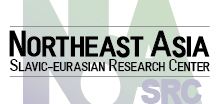UBRJ Seminar
'Boundarization and Frontierization of the East-West Border in Europe: The Case of Kaliningrad Oblast - the Russian Exclave in the EU'
The Schleswig-Holstein question was famously so complicated that only three men in Europe were said to have understood it. As Lord Palmerston (reportedly) said: 'One was Prince Albert, who is dead. The second was a German professor who became mad. I am the third and I have forgotten all about it'. Kaliningrad lies about a thousand kilometers to the west of Schleswig and Holstein. Although no comparable bon mot has yet been coined to describe the exclave, many have been left scratching their heads trying to understand this part of Russia. In his UBRJ Seminar, Jarosław Jańczak explained how he considers Kaliningrad as a micro-scale study of EU-Russia relations.
In contrast to Palmerston's absent-mindedness regarding Schleswig-Holstein, Professor Jańczak gave his audience a succinct summary of Kaliningrad's history. A million-strong population of almost exclusively of Russians occupies a 15,000 km2.parcel of land situated about 600 km from 'Russia proper'. For hundreds of years, Kaliningrad has been seen as an outpost of empire and as a place where the experience of separation is deeply rooted. Throughout its history, processes of boundarization have gone on no matter whether those with power have been German, Soviet or European. This historical background led the speaker onto his main interest that is what has happened to Kaliningrad since the fall of the Soviet Union.
At the start of the 1990s serious economic problems led local actors to collaborate with people in neighboring Poland and Lithuania. This represented a moment of 'de-boundarization' and the authorities were unable to prevent cross-border interactions. The 2004 enlargement of the European Union, however, meant that Poland and Lithuania had to prove their ability to control the border. What followed was re-boundarization as restrictions were placed on border traffic. Adding to the complexity was the Russian response to what its leaders interpreted as a challenge to their country's sovereignty. The solution? The introduction of Facilitated Travel Documents (FTD) by the EU. With an FTD in her passport, the bearer can cross EU-territory in a stay of 24 hours to get to Russia.
Professor Jańczak credited this arrangement with a second de-boundarization. More Russians began travelling to the Polish side. In turn, Poles welcomed these Russian visitors as good customers. Signage in Russian increased and local schools started to teach the language again. Local authorities even requested that more border crossing points be built. In 2012 a Local Border Traffic agreement (LBTa) was concluded. Over the following 12 months 6 million visitors were attracted to areas in the visa free zone. Many Russians living in Kaliningrad who have never been to Russia proper have been to the EU. Such de-boundarization, Professor Jańczak suggested, made Kaliningrad a 'laboratory for EU-Russia relations'.
As Palmerston would have sympathized, however, recent events have inevitably made things more complicated. Following Russia's annexation of the Crimea and the subsequent EU embargo there has been a re-boundarization. The exclave has been remilitarized and the LBTa was suspended in July 2016. Adding to the complexity is the response of political leaders in Poland and Lithuania who have used growing tensions over Kaliningrad to appeal to 'prove' their strength in an appeal to domestic audiences. In his conclusion, Professor Jańczak emphasized that Kaliningrad has usually been seen as either a 'gateway' or a 'fortress'. While the former had seemed in the ascendancy in the first decade of the 21st century, the latter now seems to be the dominant paradigm.

 Eurasia Unit for Border Research (Japan)
Eurasia Unit for Border Research (Japan)




